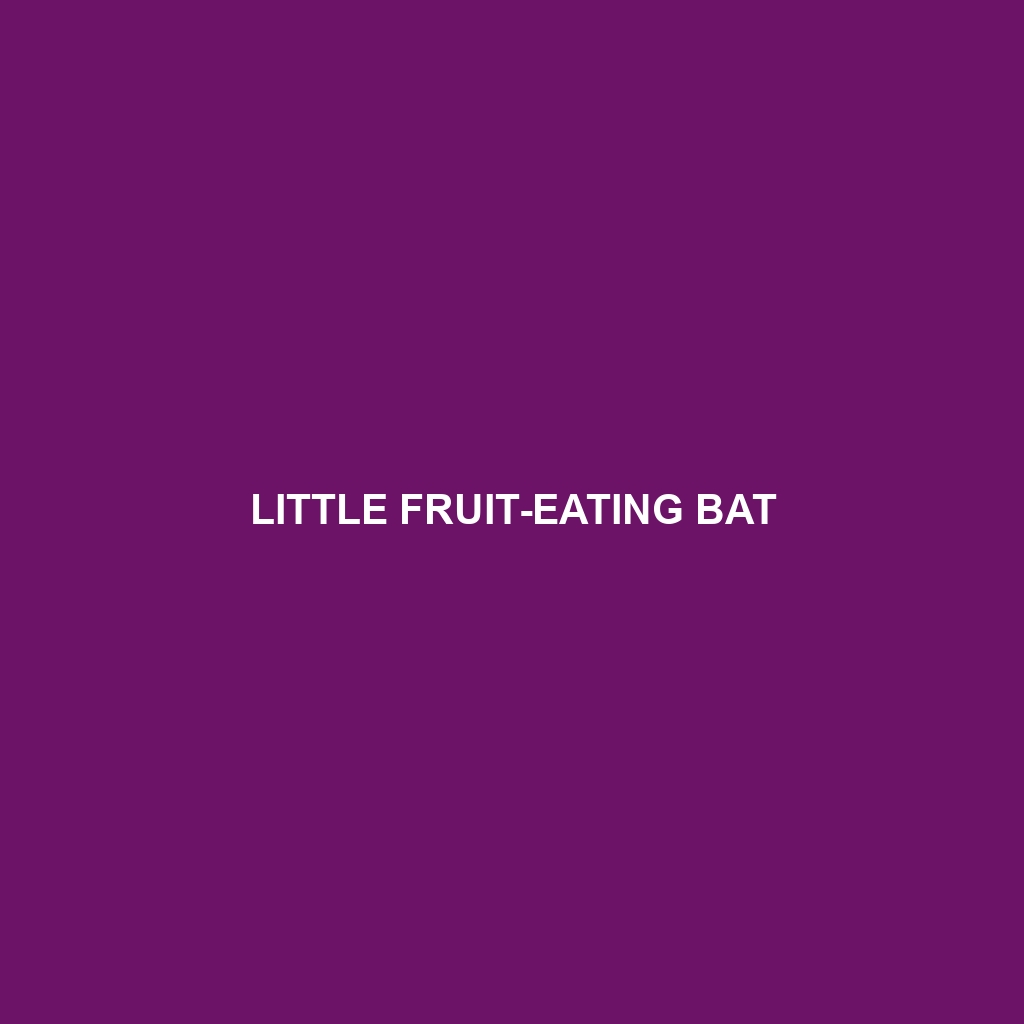Pygmy Fruit-eating Bat
Common Name: Pygmy Fruit-eating Bat
Scientific Name: Artibeus gnome
Habitat
The Pygmy Fruit-eating Bat primarily inhabits humid tropical forests and their surrounding areas across Central and South America. This species is typically found in countries such as Costa Rica, Panama, Colombia, and Ecuador. Preferring lowland rainforests, these bats are often seen roosting in dense foliage, where they can find both shelter and abundant food sources.
Physical Characteristics
The Pygmy Fruit-eating Bat is a small bat, with an average wingspan ranging from 25 to 30 centimeters. Weighing around 10-15 grams, this species exhibits a compact body with a rounded nose. The fur is mainly brown to grey, often with lighter underparts, providing effective camouflage among the leaves. Distinctive curved ears, short muzzle, and small, rounded wings make it easily identifiable among other bat species.
Behavior
This bat species is primarily nocturnal, emerging at dusk to forage for food. They display social behaviors, often roosting in small groups, which aids in locating food sources. Pygmy Fruit-eating Bats are known for their agile flight, which allows them to navigate through dense vegetation as they hunt for fruits. They rely heavily on echolocation to find their way in the dark, making them exceptional navigators.
Diet
The diet of the Pygmy Fruit-eating Bat consists mainly of ripe fruits, such as figs and berries, making them essential for seed dispersal in their ecosystem. They possess specialized teeth that allow them to nibble on fruits without destroying the seeds. This fruit-based diet is crucial for their survival and significantly contributes to the health of their habitat by facilitating recolonization of plant species.
Reproduction
Pygmy Fruit-eating Bats typically breed once a year, with the breeding season occurring in the rainy months. After a gestation period of around three months, females generally give birth to a single offspring, which they nurse for several weeks before it can forage independently. The bonding between mother and pup during this period is significant for the calf’s eventual survival.
Conservation Status
Currently, the Pygmy Fruit-eating Bat is listed as vulnerable by the International Union for Conservation of Nature (IUCN). Habitat loss due to deforestation, agricultural expansion, and climate change pose significant threats to their population numbers. Conservation efforts are vital to ensure the survival of this species and its habitat.
Interesting Facts
One fascinating aspect of the Pygmy Fruit-eating Bat is its role in pollination, as it inadvertently pollinates various plants while feeding on their fruits. Additionally, these bats can consume large quantities of fruit that may equal their body weight, showcasing their remarkable feeding efficiency.
Role in Ecosystem
The Pygmy Fruit-eating Bat plays a crucial role in its ecosystem by aiding in seed dispersal, which promotes plant diversity and growth. By consuming fruits and excreting the seeds in different locations, they contribute to forest regeneration. This species serves as an essential link in the food web, providing a food source for predators and maintaining the balance within their environment.
